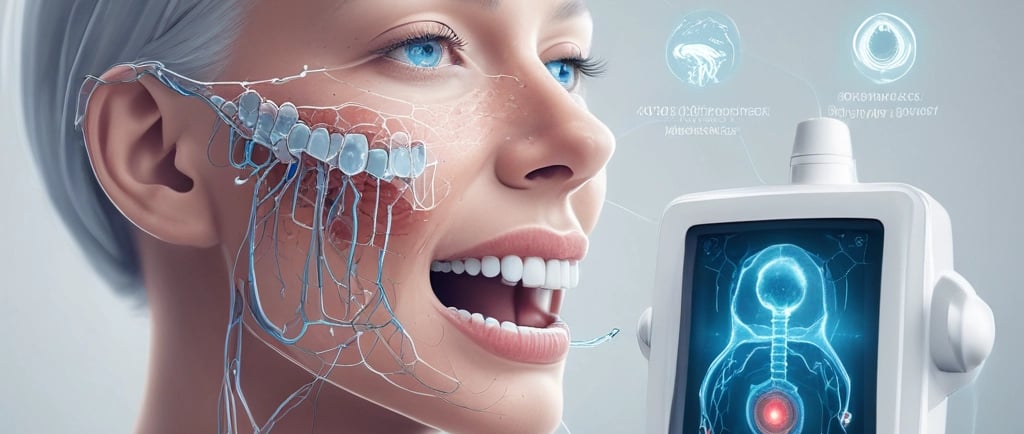Artificial Intelligence in Oral Cancer Prevention: A Dentist’s Perspective
FOR DENTISTS
3/3/20252 min read


Oral cancer remains one of the most serious conditions affecting the oral cavity, with late diagnosis being a leading cause of high mortality rates. As a dentist, I have witnessed firsthand how early detection significantly improves prognosis, yet many lesions are not identified until they reach advanced stages. In recent years, artificial intelligence (AI) has emerged as a transformative tool in oral cancer prevention, offering enhanced accuracy, efficiency, and early intervention capabilities. Various types of AI technologies are currently being integrated into dental practice to support screening, risk assessment, and patient monitoring.
1. Machine Learning and Image Recognition
One of the most impactful applications of AI in oral cancer prevention is machine learning (ML), particularly in the analysis of clinical and radiographic images. These AI systems are trained using vast datasets of annotated images to recognize abnormal patterns, such as leukoplakia, erythroplakia, or ulcerative lesions, which could be precursors to malignancy.
Convolutional neural networks (CNNs), a subset of deep learning, are especially effective in classifying oral lesions based on digital photographs or intraoral images. These algorithms can detect suspicious lesions that might be missed during visual exams, particularly in community or remote settings where access to specialists is limited.
2. Natural Language Processing (NLP)
Natural language processing is used to extract meaningful insights from unstructured clinical data, such as patient histories, clinical notes, and pathology reports. In oral cancer prevention, NLP algorithms can identify risk factors—such as tobacco use, alcohol consumption, or previous precancerous conditions—from electronic health records. This information helps in risk stratification and prioritizing high-risk patients for early screening.
3. Predictive Analytics for Risk Assessment
AI-based predictive models use patient data to estimate the likelihood of developing oral cancer. By integrating demographics, behavioral risk factors, genetic predispositions, and previous oral health records, these models can flag patients who require closer monitoring or preventive interventions. For example, AI tools can evaluate long-term patterns in oral mucosal changes or the impact of lifestyle choices, helping dentists provide targeted counseling and preventive care.
4. AI-Powered Diagnostic Devices and Mobile Apps
Several emerging tools use AI to empower both clinicians and patients in early lesion detection. Handheld devices equipped with AI can scan the oral mucosa for suspicious areas using autofluorescence or hyperspectral imaging. Additionally, smartphone-based applications allow patients to capture oral images that are then analyzed by AI algorithms to detect abnormalities, providing a valuable self-monitoring tool between dental visits.
5. Integration with Teledentistry Platforms
AI enhances the effectiveness of teledentistry by enabling preliminary screening and triage. Remote consultations can be augmented by AI algorithms that review uploaded images or data, helping dentists identify cases that require urgent referral for biopsy or specialist evaluation.
Conclusion
The integration of AI into oral cancer prevention represents a significant advancement in dental care. As a dentist, I believe these technologies not only support early detection and reduce diagnostic errors but also empower both clinicians and patients to take a proactive role in oral health. While AI does not replace clinical judgment, it serves as a valuable partner in improving outcomes and advancing the goal of earlier, more accurate cancer prevention.
